The knee joint is one of the largest and most complex. It is subjected to a heavy load every day, so it is not surprising that it periodically ceases to function normally. If your knees are sore, swollen, and the pain is almost constant, you should see a doctor. Such a pathological condition can be a signal of the development of one of the diseases that deform the joint. Of course, you need to learn to identify the situations in which you need to see a doctor. However, lack of treatment or failure to self-medicate can lead to complications.
The structure of the knee joint
To better understand why your knees hurt, you need to understand their anatomy. Thus, the articulation consists of the femur, tibia, and patella. The two largest bones have two protrusions: the inner and outer condyles.
All surfaces in contact with each other are covered with hyaline cartilage. Thanks to it, the mobility of the knee joint, its cushioning properties are provided. Around this junction of bones is a kind of capsule covered with a synovial layer from the inside. It is filled with synovial fluid, which nourishes the joint and ensures its mobility.
The knee joint is made up of more than just bones. All its elements are connected by transverse and collateral ligaments, thigh muscles, tendons. The knee cap is attached to other elements through its own link. 6 synovial sacs are needed for the knee to move. The nourishment and innervation of the presented joint is carried out through nerves and blood vessels located in the soft tissues surrounding the joint.
Knee joint pain: causes
If the knee begins to ache, swelling appears, mobility is limited, and the discomfort is severe enough, you should see a doctor immediately. If the destructive process has already begun, then it will not be possible to completely cure the knee. However, it will be possible to stop or slow down its development.
Thus, we can distinguish the following causes of pain in the knee joint:
- gonarthrosis.Damage to all joints occurs in almost 50% of cases. The pathology develops for a very long time. Among the symptoms of this disease are the following: knees do not hurt at rest, however, it is difficult for a person to climb stairs, walk for a long time, squat and get up. During the movement, the patient hears a crisis in the knee, his mobility decreases. Over time, the distance between the bone surfaces decreases due to the wear and tear of the cartilage. In this condition, osteophytes appear, nerves and blood vessels constrict, and the knee itself is deformed;
- meniscopathy, as well as the formation of meniscus cysts. Often only one knee hurts. The cause of the pathology may be a single injury or periodic damage to the joint. During exacerbation, the pain is sharp, throbbing, sharp, severe. It does not threaten joint deformity with the disease, but inflammation can affect the synovial sacs;
- circulatory problems (necrosis).This disrupts the nutrition of the knee. This is often the case with adolescents. Those who have very fast bone growth are a little harder to eat. If at first the pain in the knee joint is strong enough, after a while its intensity decreases. The pain is usually localized at one point and does not spread to the entire knee. Anxiety may be aggravated by hypothermia;
- arthritis.It is an inflammatory pathology of the knee that can be diagnosed in young people, especially women. At the same time, the knee is very painful, the affected area is characterized by swelling, the skin becomes red. The night pains become more pronounced. The knee hurts even at rest, when the weather changes. The reason for the development of pathology is overweight, old age, weakened immune system;
- bursitis.This is an inflammatory lesion of the synovial sacs of the knee. Characteristic symptoms of the pathology are redness of the skin in the affected area, swelling and a decrease in range of motion. The cavities of the synovial sacs are filled with exudate containing harmful microorganisms. The reason for the development of pathology is trauma, excessive physical activity. Not only does the knee give very bad pain, a person develops general weakness and dysfunction;
- synovitisHere, the inflammation affects the synovial membrane of the knee joint. At the same time, swelling and burning pain appear in the articular area;
- periarthritis.The disease is more commonly diagnosed in overweight women over 40 years of age. At the same time, there is discomfort when climbing stairs and straightening the legs. The pathological process affects the tendons, ligaments and muscles, joint capsules. The pain is excruciating, swelling appears in the joint;
- chondromatosis.The disease is characterized by the formation of small cartilage nodules located in the shell of the articular sac. At the same time, dehydration of the joint manifests itself, its mobility is limited, a crisis is heard while moving. The patient feels severe pain due to compression of the soft tissues;
- chondromalacia patella.Here, the cartilage undergoes degenerative changes: it simply dies. The causes of this pathological condition are banal: knee injury, the characteristics of some professions. At the same time, the knee hurts a lot, the discomfort becomes more pronounced with any movement. A crack in the left or right knee, cracking is heard very well. A person can practically not stand on the affected joint;
- bone tumor.Pain in the knee is caused by the growth of a neoplasm that compresses the soft tissues with nerves and blood vessels;
- Baker's cyst. This is a small hernia that can occur in young people and children aged 3 to 7 years. It is so small that it is not always possible to diagnose it during the examination. It does not pose a threat to human health and does not cause concern. However, if it grows, it can cause joint pain, especially when bending and straightening the leg. If the hernia is large, surgery is performed to remove it;
- knee tendinitis.It is an inflammation of the tendons in the knee area that cannot function properly. Almost everyone suffers from this disease. The pain is usually excruciating and the affected area reacts to changes in the weather;
- knee osteochondritis.This is where the cartilage is peeled off the articular surface. At first the knee does not hurt much, but over time its intensity increases and inflammation joins the pathological process;
- Koenig's disease.Here, some of the cartilage can separate from the bone and move inside the joint. At the same time, movement becomes difficult, there is a slight pain. Swelling of the knee joint is also observed as you progress. Treatment of pathology in adults is more difficult than in children;
- Osgood-Schlatter pathology.Provides the formation of bumps in the knee area. The disease is most often diagnosed in boys, as well as in people who exercise. The pain is sharp, intensified by bending and straightening the leg.
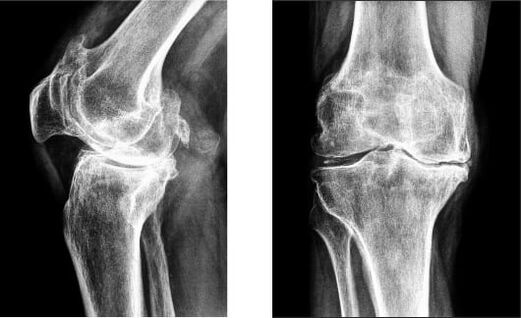
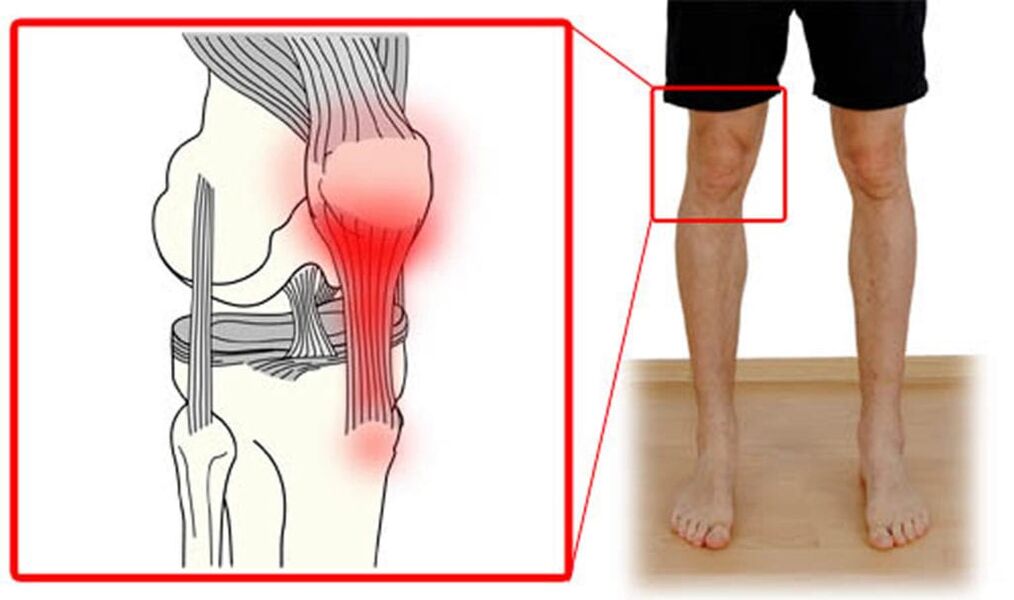
These reasons are fundamental, but not alone. Therefore, it is necessary to take into account other factors that cause pain in the knee.
Diseases of other organs as a cause of pain in the knee
Some pathologies not related to the knee joint can cause pain:
- Fibromyalgia.The discomfort is localized in the muscles and soft tissues, but can be transmitted to nearby joints. The inflammatory process does not develop. In addition to pain in the knee joint, a person may feel stiffness, fatigue in movements, and may experience convulsions.
- Dysplasia or coxarthrosis of the hip joint.In this case, the pain syndrome spreads to the whole leg.
- Sciatic nerve neuropathy.Compressed by the vertebrae of the lumbar-sacral spine. Severe throbbing pain can spread to the thighs and knees.
What systemic pathologies can cause knee pain? In addition to the causes described above, there are other factors that contribute to the development of pain syndrome:
- gut.The disease is caused by a violation of uric acid metabolism in the body. It is poorly extracted from it and turns into salt deposits that accumulate in the joints. In this case, the knee may hurt. And the pain is very sharp. It is more common in men who abuse alcohol and eat improperly. The skin in the affected area becomes red, and at night the knee joint hurts more. The duration of the attack is from a few days to a few weeks;
- osteoporosis.It is associated with low bone density due to pathological, improper formation. Pain in the knee joint is dull and painful, it is not so easy to eliminate. In this pathology, the bones are very sensitive to fractures;
- rheumatoid arthritis.It is a systemic pathology characterized by inflammation of the connective tissue. Begins to actively develop with a decrease in the body's protective functions. It manifests itself with a feeling of stiffness that a person can feel after a long stay at rest;
- osteomyelitis.The presented bacterial pathology causes very severe pain of a dull nature. The skin in the affected joint area turns red and discomfort increases with any movement. The danger of this disease is that its result is the onset of bone marrow death;
- infectious diseases.They are characterized by pain in the knee joint, which disappears after a course of antibiotic treatment;
- Paget's disease.In this case, the bone tissue is formed incorrectly, so the spine begins to deform. The tubular bones affected by this pathology later become very fragile. It is very difficult to recognize this disease, because the symptoms may not appear. The only thing that can indicate the presence of pathology is painful knee pain at night and a feeling of warmth at the site of the lesion.

If knee pain is the result of a systemic disease or skeletal pathology, it is not always possible to get rid of it completely. However, treatment must be carried out to prevent the disease from developing further or at least slowing its progression.
Trauma as a cause of pain syndrome
In this case, pathological processes can develop both immediately after the injury and for some time after it. We can distinguish the following injuries of the knee joint:
- Torn, torn or torn ligaments in the knee.These injuries cause the appearance of "advanced" articulation syndrome. In addition, a person feels severe pain, develops hemarthrosis of the joint, which becomes unstable.
- injury.The intensity of the pain syndrome is low here. There are no serious consequences after the injury. The swelling, as well as the hematoma, usually disappears on its own within a week or two.
- Meniscus hernia.This results in a strong blow to the anterior region of the knee joint. After an acute period of pathology, the pain syndrome usually bothers the patient when climbing stairs, it is very difficult to implement. There is a slight swelling in the knee joint.
- Broken.It is visible when falling from a great height or when there is a strong shock effect. The pain is strong, sharp, there is swelling in the affected area, the skin becomes pale. The victim is unable to stand on his injured leg. During a fracture, a squeaking and hissing sound is heard and the bone can pass through the skin.
- Tendon hernia.This injury is not common, but causes acute and then excruciating pain. Pain in the left or right knee increases during walking.
- Dislocation of the knee joint.In this case, some of the components of the compound may come out of it.
Trauma can lead to chronic illness.
Most pathologies of the knee joint have similar symptoms, so it can be very difficult to recognize them. Therefore, it is not worth treating yourself, because you can aggravate the situation.
Who is at risk
Knee pain, tingling, and swelling in the affected area are more common in some people than in others. The risk group includes the following people:
- Presence of primary pathologies.
- genetic predisposition.
- Constant sports load on the knee.
- Excess body weight.
- injury.
- I had surgery on my knee.
- Quite good development of the muscular apparatus of the knee joint.
In addition, women are more susceptible to knee diseases, as well as the elderly and the elderly.
In what cases it is necessary to consult a doctor
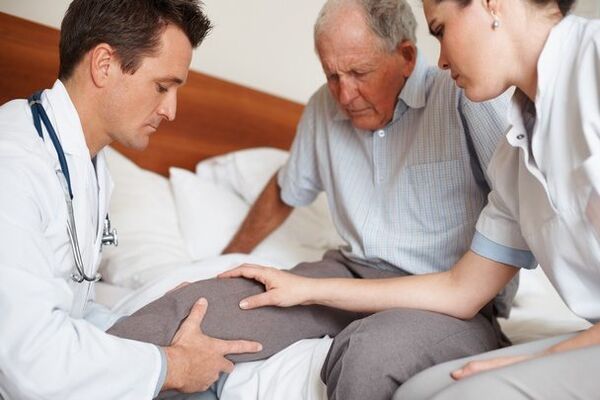
If a person feels pain in his knees, in this case he should immediately contact a specialist:
- The patient has been experiencing excruciating pain for more than two months, which does not allow him to sleep comfortably at night.
- If the pain syndrome is characterized by high intensity, it occurs suddenly.
- A crunch is heard in the knee joint while walking.
- Knee hurts daily and at certain times, under certain conditions.
- Instability is felt in the knee joint from time to time.
- If there are additional pathological symptoms: skin rash, fever, fever.
- Deformity of the joints, accompanied by limited mobility, accompanied by excruciating pain.
- Pain syndrome becomes a person's constant companion.
- Symptoms of the inflammatory process appeared: redness of the skin, swelling, increase in local temperature in the affected area.
These symptoms are enough to decide to see a doctor. By postponing the visit, the patient increases the duration and complexity of therapy, as well as allows the further development of pathology.
Types of pain
Why the knees hurt, most of the reasons for the development of the pathological condition are already clear. However, the nature of the pain may be different. For example, depending on the disease that causes it, the pain is of the following nature:
- iti, iti.It causes rupture of the meniscus or ligaments, reactive arthritis, acute stage of bursitis;
- boring, tedious.Bursitis or synovitis can provoke it;
- it hurts.This type of pain is characteristic of osteoarthritis, gonarthrosis;
- pulsating.A person feels as a result of a lesion with damage to the meniscus or deforming arthrosis;
- burning.Compression of the sciatic nerve is also characteristic of tuberculosis of the bones;
- to stab.It is caused by a cyst in the synovial bursa. And stabbing pain is characteristic of osteoporosis, an old injury to the meniscus;
- drilling.Causes osteomyelitis;
- periodic.It appears when the patient develops inflammation of the tendons or muscles;
- shooting through.Causes nerve endings to constrict.
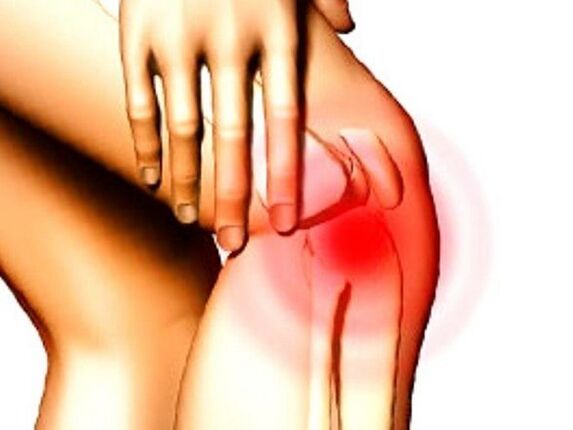
Diagnosis of pathology and first aid
Many people complain of pain in their knees and do not know what to do. But if you feel pain and tingling in the knee joint, you must be examined and start treatment.
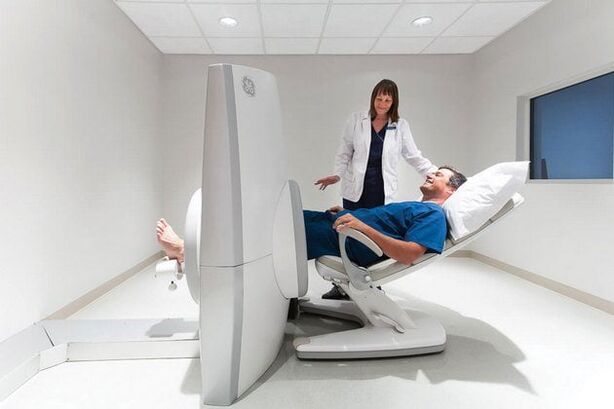
Diagnosis involves the use of such procedures:
- Blood and urine laboratory tests.
- Blood chemistry.
- Bone marrow and synovial fluid puncture.
- Smear for the presence of bacterial microflora.
- Arthroscopy. This procedure is used both as a diagnosis and as a treatment for joint pain. This is easy to do and does not require long-term rehabilitation.
- Radiography.
- MRI or CT.
- ultrasound.
- Densitometry.
Knee pain: First aid
If a person feels pain in his leg or pulling pain in the knee area, he should first provide the rest of the joint. Home treatment involves taking painkillers or anti-inflammatory drugs.
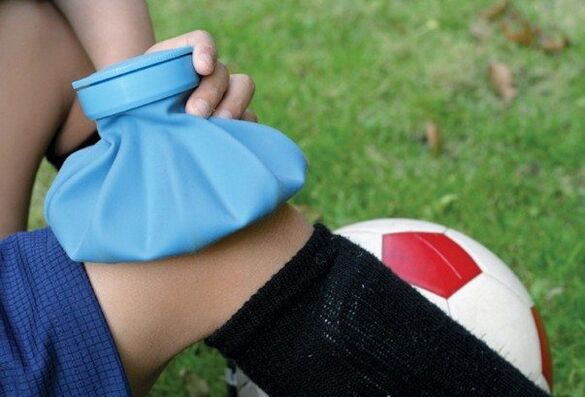
The pain can be relieved with a cold compress. When the cause of the pain is trauma, a cold is used as a painkiller. The limb is immobilized and placed on a hill. If there are wounds in the area of articulation, they should be treated with antiseptic. These measures are not a complete cure. They should be taken only before going to the doctor.
Knee Pain: Medical Treatment
So, what to do if you hear a crack in the joint and feel severe discomfort? You must first find out why these symptoms appear. One of the stages of therapy is drug treatment. Thus, with pain in the knee joint, with the help of such drugs you can quickly eliminate severe symptoms:
- antibiotics (when anxiety causes a viral infection);
- non-steroidal anti-inflammatory drugs.
Some pathologies need to be treated with surgery. If there is fluid in the cavity of the knee joint, it should be removed. The cyst can also be treated with surgery or glucocorticosteroid blockade.

If the joints ache due to injury, in some cases it is necessary to relocate the bones. A tight bandage, orthosis and even plaster is applied to the affected joint. A joint should be treated not only with the help of pills. The patient is often instructed to wear or use special orthopedic devices to remove the load from the knee.
Systemic pathologies need to be treated comprehensively. In these cases, knee pain should be treated with immunosuppressants, anti-inflammatory drugs, glucocorticosteroids. In order to eliminate the symptoms of gonarthrosis, joint medications and chondroprotectors are used.
Therapeutic gymnastics and massage
If you have pain in the knee joint while standing, a squeak is heard, and even at night there is discomfort, exercise, as well as massage sessions will help to get rid of stiffness and relieve pain.
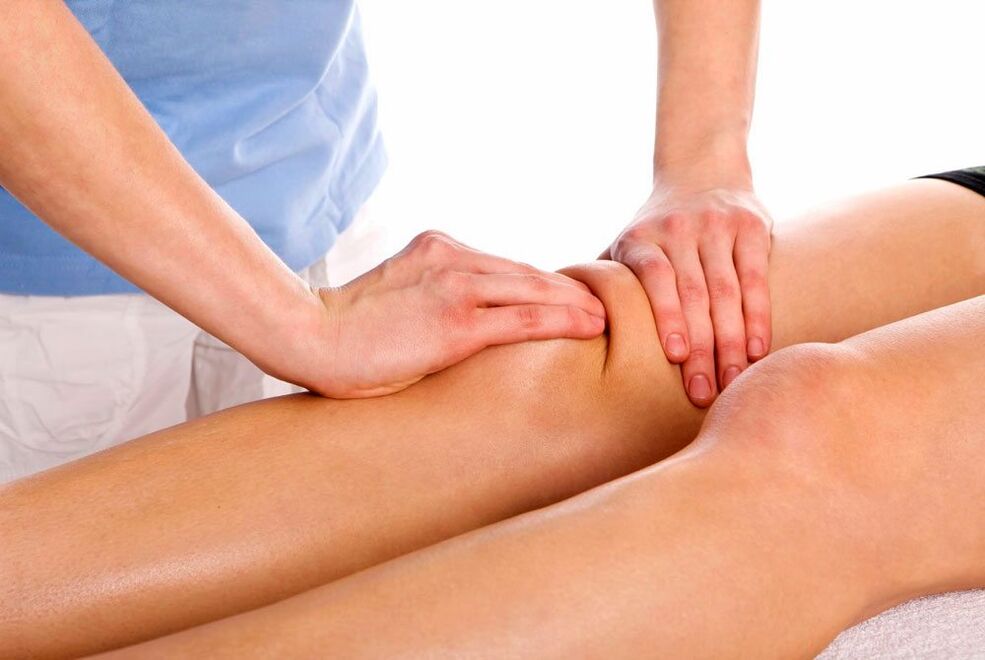
At the same time, if the person is not very painful and should do gymnastics with a doctor's permission. All exercises are performed slowly. You can not make sudden movements. If your knees hurt a lot, then you need to move on to the simplest exercises. Weekly load can be increased.
While lying or sitting, you can bend and extend the limbs, alternate half-turns, pull the knees to the stomach, move the legs to the sides. After completing a series of exercises, you should rest, then move on to massage. This procedure is also very effective in relieving pain.
Painful knees can be kneaded and rubbed on their own, but it is better if a specialist does it. To get rid of most of the symptoms, you should perform a course of massage procedures for no more than 20 minutes per session. Rubbing the inner and outer, as well as side surfaces, pressure is applied to the patella. You must ensure that the person is not harmed during the procedure.
How to treat knee joints at home?
A crisis in the knees, as well as pain seen at night, is an unpleasant phenomenon. It is already known why these symptoms appear. However, it is possible not only with medication, but also to relieve pain and restore normal joint function. You can do this at home with the help of folk remedies.
Getting rid of pathology quickly will not work. You should treat your knee in this way for at least two months. In addition, you need to find really effective products that have good reviews.
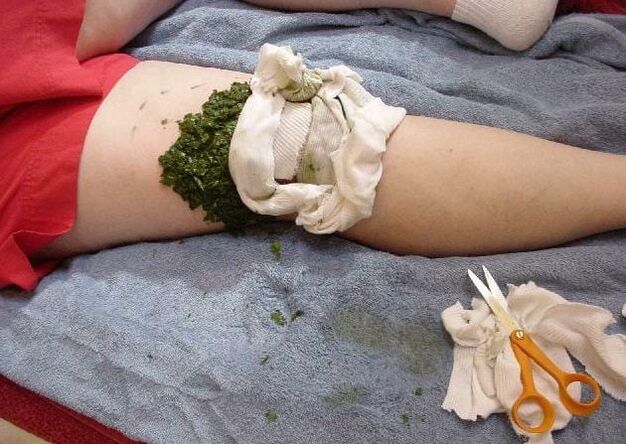
The following recipes may be helpful:
- Pour 2 tablespoons of cinquefoil herb in half a liter of boiling water, after which you should allow it to brew. The drug should be taken 100 ml twice a day. You can apply cinquefoil decoction to a sore knee as a compress for the night.
- Oatmeal decoction will help to get rid of pain. To prepare it, you need to take a liter of water and a glass of grain. The mixture is boiled, then left overnight to infuse. During the day, you should use 2 glasses of liquid in several portions. This treatment of the joints takes 2 weeks.
- You can apply grated potato and horseradish compress in equal proportions to relieve discomfort and improve blood circulation in the affected area. It will help to get rid of pain quickly. Apply a compress to the affected knee and cover with a clean cloth. Rinse after 15 minutes. Only 10 procedures are enough to eliminate the unpleasant symptoms.
- Mustard compress applied to a sore leg at night also received good reviews. To prepare it, take a spoonful of mustard, mix it with the same amount of honey and soda. Compress until the morning will help relieve severe anxiety.
- If the knee joints hurt, a hot pepper tincture can be used to rub. A half-liter jar should be filled with chopped pepper and then alcohol should be poured on the top of the container. You should insist on the remedy for a week.
You can do a self-massage of the knee at home.
If you already know why the problems occur, then you can choose the appropriate folk remedies that will help eliminate them. But before that you need to see a doctor.
Prevention of pathology
To keep your knee joints healthy and working well for a long time, you should follow the simple recommendations of doctors:
- Reduce joint stress.
- It is rational to combine rest and work.
- Treat any infectious disease in the body in a timely manner.
- Avoid hypothermia of the extremities.
- It is recommended to start taking chondroprotectors after 35 years.
- Joints should be protected during exercise with knee pads - special orthopedic devices to fix the joint.
- It is important to normalize your weight.
- Nutrition plays an important role in skeletal health. It is better to reduce the consumption of saturated animal fats, white bread, sweets. The diet should include more fiber, vegetable oils, vegetables and fruits. Proper nutrition will not only help relieve anxiety, but also improve joint functionality.












































